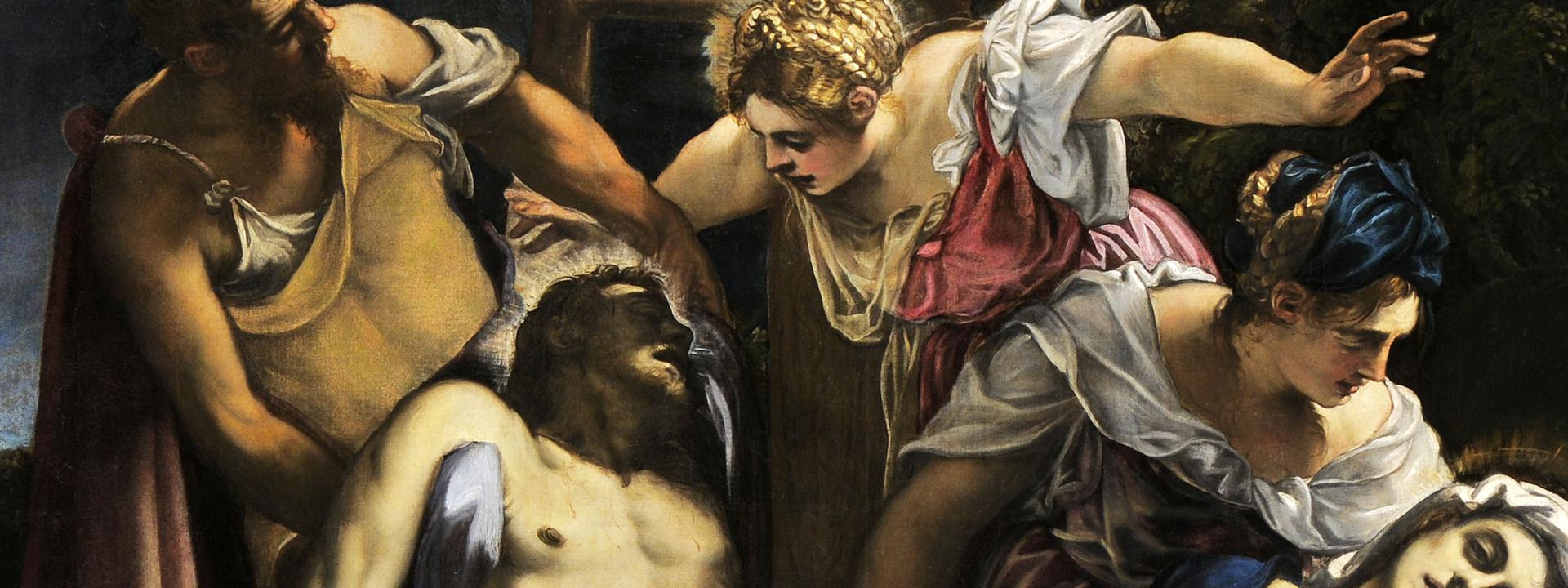This canvas was formerly in the church of l’Umiltà at the Zattere between the Rio della Salute and the Dogana da Mar. Mentioned by Boschini (1664) as being “above the altar”, it was soon after removed to a more marginal position – Zanetti (1733), in fact, places it “above the large window”. Following the Napoleonic Suppression the church became state property in 1806 and the painting was entrusted to the Accademia before the church was demolished in 1821. The figure of the Virgin Mary almost appears to be seated on the ground, as the Madonna of Humility is usually depicted, and references the name of the church it was commissioned for. Compared to traditional representations of Christ’s deposition, Tintoretto gives us a much smaller group of bystanders, their monumental figures appearing larger than life. Mary Magdalene takes up a third of the upper part of the painting with her arms outstretched in a gesture of anguish as she concentrates on Christ’s face, as if looking for a sign of life. The composition is perfectly balanced with the elongated bodies of Christ and his mother forming a cross while an ideal diagonal line can be traced by the two male figures on the left, which is mirrored by a diagonal line ideally linking the three female figures on the right. The nude sculpted form of Christ’s body is powerfully reminiscent of Michelangelo and the intensity of the chiaroscuro highlights the figures as they emerge from the enveloping darkness, making this work an emotionally charged masterpiece. The painting dates from between the early 1550s and 1560s.
- Visit
- What's on
- On-line collections
- SEATS
- Exhibitions
- EDUCATION PROGRAMMES
- Online Activities
- Artworks not on display
- SPACES AND IMAGES CONCESSIONS
- SUPPORT US
-
TRANSPARENT ADMINISTRATION
- GENERAL PROVISIONS
- ORGANISATION
- CONSULTANTS AND COLLABORATORS
- STAFF
- PERFORMANCE
- Bandi e gare
- CONTRACTS
- Determine
- PROVVEDIMENTI
- BALANCE SHEETS
- GRANTS, CONTRIBUTIONS, SUBSIDIES, ECONOMIC ADVANTAGES
- ADMINISTRATIVE PAYMENTS
- LEGAL PROCEDURES
- ADMINISTRATIVE SUPERVISION AND EVALUATION
- ACCESSO CIVICO
- SERVICES PROVIDED
- OTHER CONTENTS
- CREDITS
- CONTACT
- English
- italiano

